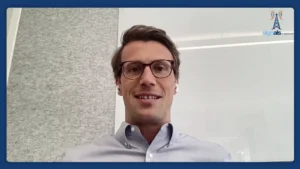HOW TO SOLVE & PREVENT SMOKE DRAW ISSUES (PART 1/2)
A fireplace that lets smoke fill into your home is not only a nuisance, but can be a safety hazard as well. The good news is that for a properly installed fireplace, the culprit is likely one of two things:
- Blockage in your chimney
- An environmental condition
While it may take a little bit of elbow grease to get to the root cause, the fireplace experts at FireRock are here to break down these culprits with step-by-step instructions on how to identify and correct your smoking fireplace problems.
For a handy guide, utilize our Smoke Draw Issues eBook:
But first a note on safety … please, don’t start any more fires in your home until you have gone through the suggestions below. And please seek help of a licensed professional if you’re at all unsure. A FireRock customer service representative can be reached at 888-876-1025 to help put you in touch with an expert near you.
STEP 1 – CHECK CONSTRUCTION
If your fireplace smokes whether you have a large or small fire burning, your first step is to check the fireplace construction for any errors during the installation process or to clear an obstruction of any kind.
Installation Errors Resulting in Too Tight Chimney or Smoke Chamber
Whether you dotted every “i” and crossed every “t” and hired a professional fireplace installer or you installed the fireplace yourself, people are human and mistakes happen. So if you’re having smoke issues, review the manufacturer’s installation manual to ensure it was built correctly. The throat front and back should fit well at the top of the firebox and not restrict the opening air space. If you have a throat damper, ensure it does not restrict the throat opening either. Check to see if firebrick or other material has been added to the back of the throat, which would reduce the throat opening area and should be removed. Feel around for smooth, streamlined surfaces with no obstructions that would restrict or redirect air flow.
Flue Size
For a fireplace to draw well, you need to be sure the flue size is adequate for the amount of smoke that can be created in the firebox. A good rule of thumb is that the fireplace opening be no more than 10-12x the area of the flue. A smaller flue simply can’t process the amount of smoke, causing some to spill back into your home. For metal chimney systems, we recommend at least a 14” flue for 36” and larger boxes.
Restrictions & Debris
You can also try looking for restrictions in the firebox and throughout the chimney. Squirrels and birds have been known to make their home in chimneys and that debris from their nests can build up over time and cause blockage issues. Even spider webs in flues that haven’t been used for a long time can redirect air flow. While it sounds obvious, double check that your damper is fully open and installed correctly. An accidental damper closing has been the cause of many smoke-filled rooms over the course of history. Take the damper blade out if necessary to see if it is causing a blockage issue. Tops and caps should have a combined opening four times the cross-sectional area of the flue.
If you were successful in finding debris or other air flow restrictions in the smoke chamber or flue, build a small fire and test to see if the smoke issues remain. If no, then congratulations on literally clearing away your issue. If the smoke issues do persist, however, continue on to Step 2.
STEP 2 – CONSIDER ENVIRONMENTAL CONDITIONS
If your fireplace is built correctly and there are no restrictions – or if the fireplace seems to work okay with a large fire and only starts to smoke after the fire dies down – then the problem is likely negative indoor pressure causing a downdraft or inadequate ventilation (or both).
For the following trouble-shooting tasks, we’re going to use a stick of burning incense to act as the smoke from your fire.
Pressure Differential
You need an up-draft in a cold chimney with no fire in the fireplace. Hold your stick of incense in the throat of the fireplace and see if the smoke goes up the chimney. If it does, great. But if the smoke blows down and back into the room, there is a downdraft and the room is too negatively pressurized. What this means is the easiest way for makeup air to replace the air being lost or exhausted somewhere else in the house is down the chimney.
To solve for this problem you need to find a way to neutralize the downdraft. You can do this by opening a window or door low in the house, turning off a fan or your furnace or closing upstairs windows. Try these things one at a time (while still doing the incense test) and give the air enough time (2-3 minutes) to reverse itself. See what it takes to control the indoor air pressure so that there is no downdraft in the chimney and the smoke begins to draw upward.
Please note, every home is different so what works for one may not work for all. A good rule of thumb is to think about reducing the air escaping high in the house and increasing the air coming into the house on the lower floors. Note, it may make a difference which window you open or close, especially in a breeze. So when you open a window, check to ensure the outside air is actually flowing in.
Adequate Flow
Now that you have control of the pressure, it’s time to check for adequate flow. In a very tight house (think spray foam insulation) that doesn’t allow much air to leak in or out, you may have adequate pressure differential but not enough flow. This means that while there may be no downdraft in a cold chimney, when a fire is burning there is not enough makeup air in the house for it to draw properly. One way to test this is by trying to simulate the air loss caused by a fire by turning on a kitchen fan to create a downdraft. Again, use incense to test. Then add ventilation air (opening a downstairs window that is blowing air into house, etc. as described above) until the cold chimney drafts up – even with the kitchen fan still on – and you will know how much air is needed for the fireplace. It’s now time to think of a more permanent solution like adding a chimney fan or an air-to-air heat exchanger.
STEP 3 – ENJOY
Once you’ve determined that the fireplace has been installed correctly, is free of restrictions and has proper ventilation …light up a fire and enjoy!









